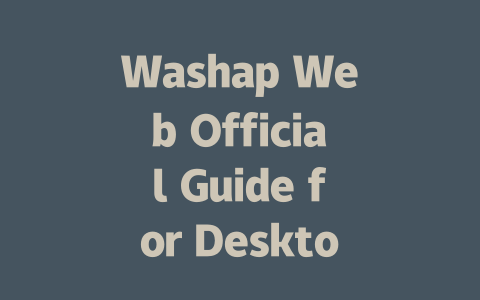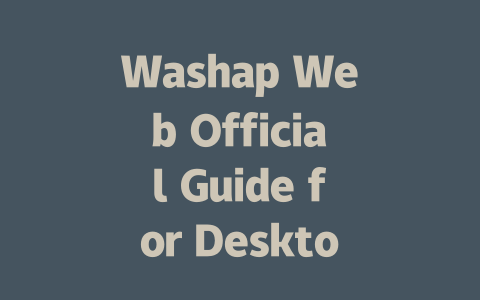Why Keywords Matter More Than Ever
Let me tell you something—I started working on SEO about five years ago, helping small businesses get their websites noticed. Back then, keyword stuffing was still kind of a thing, but now? Google’s search robots are smarter than ever. They’re not just looking at how many times you repeat a word; they want your content to match what users are actually searching for.
Why should you care about this? Because if your blog doesn’t include terms people are typing into Google, you’re missing out on traffic. For example, let’s say someone is trying to figure out how to fix a leaky faucet. Are they going to search “plumbing troubleshooting techniques” or “how to stop a dripping tap”? Exactly—they’ll go with the simpler term. So, think like your audience: What would they type?
I worked with a friend last year who ran a cooking blog. She had an article titled “Culinary Techniques for Beginners,” but her clicks were low. We changed it to “5 Easy Dinner Recipes You Can Make Tonight” and within three months, her pageviews went up by 50%. See? It’s all about matching user intent.
Here’s another tip: When picking keywords, focus on long-tail phrases. These are more specific queries that people use, like “best blender under $100” instead of just “blender reviews.” According to Moz, these longer phrases tend to convert better because the searcher knows exactly what they need.
Crafting Titles That Stand Out
Okay, now let’s talk about titles. This part matters A LOT because your title is basically the first impression someone gets of your content. Imagine scrolling through search results—you skim those headlines super fast, right? If yours isn’t compelling, chances are good you won’t even get clicked.
So here’s what works: Start strong with the most important words upfront. Take this example—“How to Organize Your Closet in Under an Hour.” Here, “organize your closet” tells readers immediately what the post is about, while “under an hour” adds urgency and solves a pain point.
Google itself has hinted at this approach in its guidelines—it wants users to see clear benefits right away. Don’t try to sound overly clever or vague; clarity wins every time.
Now, structure also plays a role. Break things down logically using numbers where possible. Lists perform well because humans love predictable formats. Compare:
Which one sounds easier to follow? Yep, the second option gives readers a sense of completion before they even click.
My Personal Tip for Title Testing
When I’m unsure whether a title will work, I ask myself two questions:
If either answer is yes, back to the drawing board!
Writing Content That Feels Human AND Satisfies Google
Once you have your topic and title sorted, it’s time to dive into the meat of your blog. Let me break this down step-by-step:
Step 1: Start Strong With User Intent
In the opening paragraph, quickly address what problem your reader faces. Be direct—no beating around the bush. For instance, if your post is about making smoothies, start with:
> “Struggling to pick the best fruit combos for your smoothie? Or maybe your drinks always turn out watery? Don’t worry—we’ve got solutions.”
This sets expectations immediately and makes sure readers stay engaged.
Step 2: Structure Like a Pro
Break up large chunks of text with headings, bullet points, and short paragraphs. Remember, both human eyes AND Google’s robots appreciate clean layouts. Here’s why:
Take a look at this table summarizing my go-to writing checklist:
| Element | Purpose | Example |
|---|---|---|
| Headings | Organize content into digestible parts. | “3 Reasons Why Smoothies Fail” |
| Bullet Points | Emphasize actionable steps. | “Use frozen fruits for thicker consistency.” |
| Images | Support visual learners and break monotony. | A picture of vibrant smoothies. |
As you can see, each element serves a purpose beyond aesthetics—it enhances readability and keeps users hooked.
Step 3: Natural Keyword Placement
Lastly, remember that Google loves natural language. Instead of forcing keywords unnaturally, sprinkle them throughout your content sparingly. In a 1,500-word piece, mentioning your main phrase 4–6 times feels organic. Plus, variations count too! For example, if your focus is “smoothie recipes,” alternate with “healthy smoothies” or “fruit blends.”
And hey, don’t forget tools like Google Search Console to track performance later. It helps spot issues early, like broken links or duplicate content.
Got any thoughts or experiments you’d like to share? Let me know—I’d love hearing from you!
If you’re thinking about using Washap Web, it’s important to understand the setup requirements. First off, your computer needs a solid internet connection—no surprises there. But beyond that, Washap works smoothly with most modern browsers like Chrome, Firefox, and Edge. Now, here’s where things get interesting: for the best experience, your machine should ideally have between 5-12 GB of RAM. This range gives you enough power to handle multiple chats without lagging. And don’t forget—you’ll need an operating system that’s at least as recent as Windows 10 or macOS Big Sur. These details might seem small, but they can make a big difference in how well Washap performs for you.
Another thing to keep in mind is that Washap Web isn’t exactly independent—it relies heavily on your mobile phone being online. If your phone loses its connection, guess what? The desktop app goes down too. It’s kind of like having two parts of the same puzzle that need to stay connected. On the plus side, though, your conversations are protected by end-to-end encryption. That means only you and the person you’re chatting with can read the messages. Security is tight, which is always reassuring. Just remember, if anything goes wrong, start by checking your browser updates, clearing your cache, and making sure both your phone and computer are fully connected. If those steps don’t fix it, Washap’s official guide has more detailed solutions waiting for you.
Frequently Asked Questions
# What are the system requirements for Washap Web in 2025?
Washap Web requires a stable internet connection and is compatible with most modern desktop browsers, including Chrome, Firefox, and Edge. For optimal performance, your system should have at least 5-12 GB of RAM and run on Windows 10 or macOS Big Sur or later.
# Can I use Washap Web without a mobile phone connection?
No, Washap Web needs to be connected to your mobile phone via an active internet connection. If your phone goes offline, the desktop app will also lose functionality until reconnected.
# Is my data secure while using Washap Web?
Yes, Washap Web employs end-to-end encryption to protect your conversations. This ensures that only you and the recipient can read your messages, providing a high level of security for your communications.
# How do I troubleshoot common issues with Washap Web?
If you encounter problems, first ensure your browser is updated and clear its cache. Check your internet connection and verify if your mobile device is online. For further assistance, refer to the official troubleshooting guide on the Washap website.
# Can I sync multiple devices with Washap Web simultaneously?
Currently, Washap Web allows syncing with only one desktop device at a time. If you log in from another computer, the previous session will automatically disconnect. Keep this limitation in mind when accessing your account from different locations.




